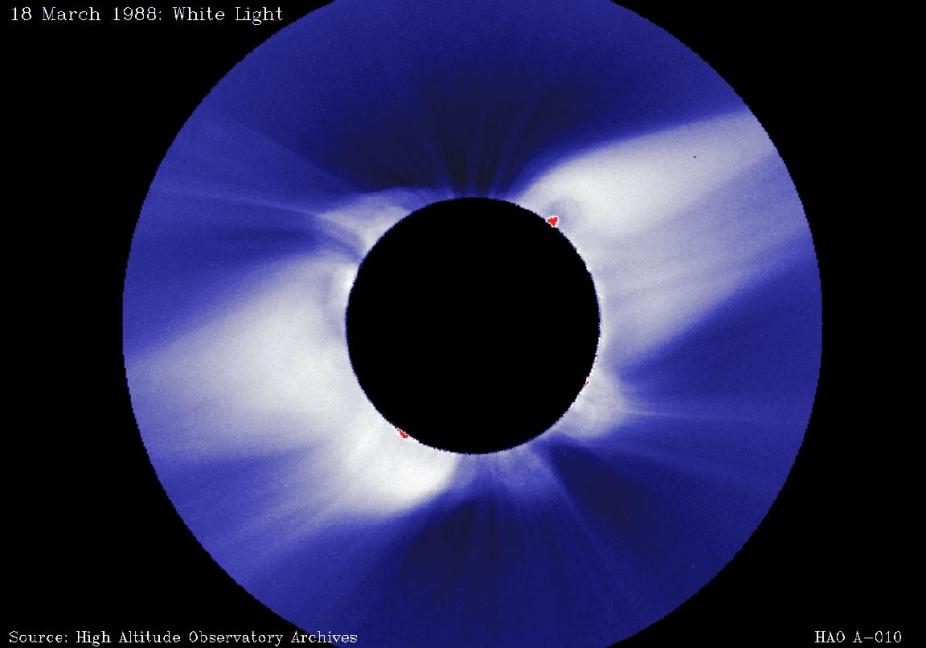Total Solar Eclipse of 1988
Another eclipse photograph, this one taken on March 18, 1988, in the Philippines.

March 18, 1988: White light image.
As on the preceding eclipse photograph North is toward the top. While huge streamers are present over the SE and NW limbs (remember now, East is the the left and west to the right), only a few small streamers are visible over the north and south solar poles. Note also how, unlike the preceding eclipse photograph, streamers big and small no longer extend radially above the solar limb, but instead are bent toward the equatorial plane (running left to right here). The corona never looks the same from one eclipse to the next. Streamers appear brighter than the rest of the corona because the gas density within them is larger than their surroundings, which increases scattering of sunlight and so leads to enhanced brightness. As in the case of filaments and prominences (cf. slide 6, slide 7 and slide 8), this gas is trapped and confined by the outward extension of the solar magnetic field. The base of streamers consists of nested loops of magnetic fieldlines, anchored at both ends below the photosphere on either sides of a magnetic neutral line. Beyond a certain height these magnetic loops are forced opened and stretched radially outward by the solar wind, producing the prototypical "spiky helmet" appearance of streamers. Curiously, the historical record does not appear to contain any specific description or drawing of helmet streamers before the early 18th century; this is peculiar, since helmet streamers are rather noteworthy features of the corona at times of eclipses.
Written By P. Charbonneau and O.R. White–April 18, 1995